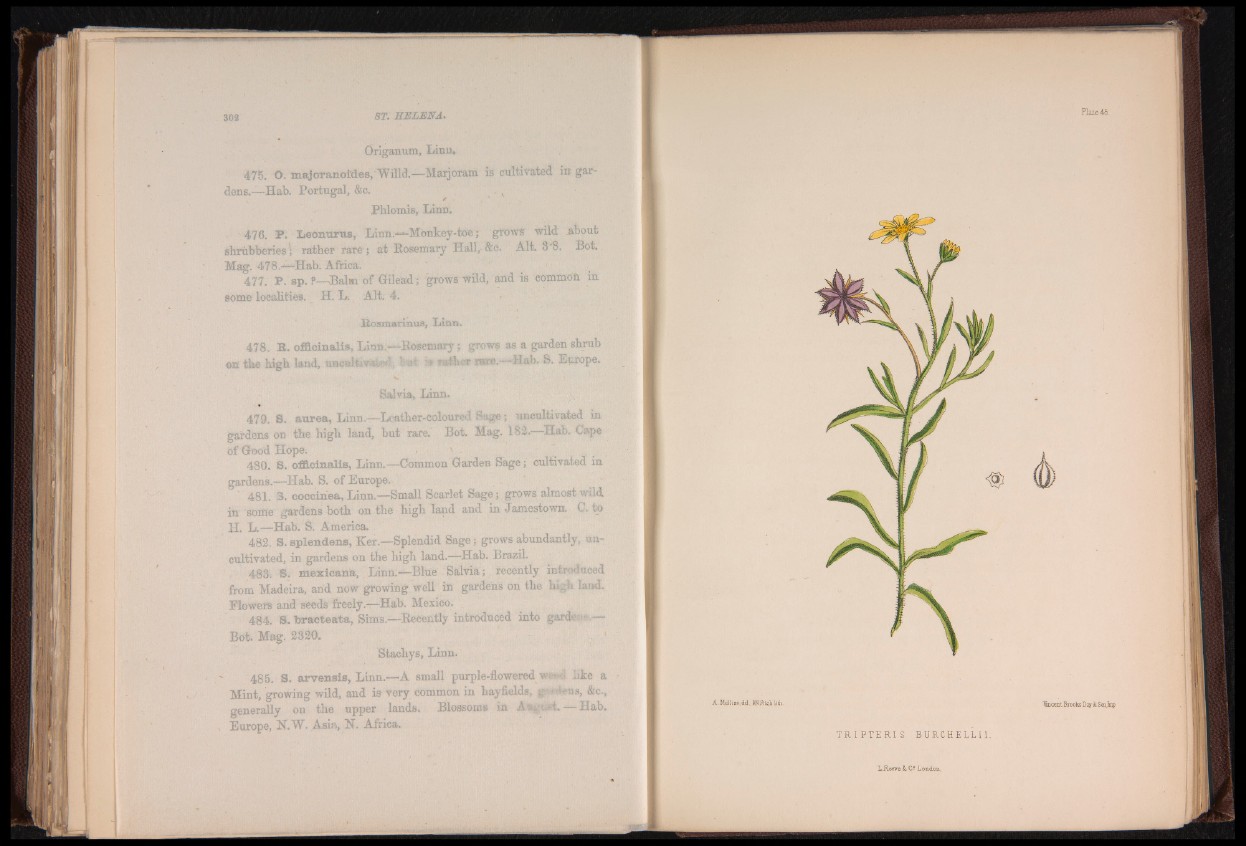
303 ST. HELENA.
Origanum, Linn.
475. O. majoranoides, "Willd.—Marjoram is cultivated in gardens.—
Hab. Portugal, &c. ' . ■ , ,
Pblomis, Linn.
- 476. P. Leonurns, Linn.—Monkey-toe; grows wild about
shrubberies } rather rare ; at Rosemary Hall, &c. Alt. 3 8. Bot.
Mag. 47.8.—Hab. Africa.
477. P. sp. P—Balm of Gilead ; grows wild, and is commda in
some localities. H. L. Alt. 4.
Rosmarinus, Linn.
478. R. officinalis, Linn.—Rosemary; grows as a garden shrub
©n the high land, uncultivated ta* is w*lwr m».-—Hab. S. Europe.
Salvia, Linn.
4 7 9 . S . aurea, Linn.—Leather-coloured Sage; uncultivated in
gardens on the high land, but rare. Bot. Mag. 183.—Hab. Cape
Of Good Hope. ' - • . . , .
480. S . officinalis, Linn.—Common Garden Sage; cultivated in
gardens.—Hab. S. of Europe.
481. 3. cocciriea, Linn.—Small Scarlet Sage; grows almost wild
in sonfe gardens both on the high land and in Jamestown. C. to
IT. L.—Hab. S. America.
482. S . splendens, Ker.—Splendid Sage; grows abundantly, uncultivated,
in gardens on the high land.—Hab. Brazil.
483. S. mexicana, Linn.—Blue Salvia; recently introduced
from Madeira, arid now growing well in gardens on the high land.
Flowers and seeds freely.—Hab. Mexico.
484. S. b ra cteata , Sims.—Recently introduced into garde«®.—
Bot. Mag. 2320.
Stachys, Linn.
485. S . arvensis, Linn.—A small purple-flowered watwl like a
Mint, growing wild, and is- very common in liayfields, guldens, &c.,
generally on the upper lands. Blossoms in A^pasi. — Hab.
Europe, N.W. Asia, N. Africa.
A .M eL L ss.d d , JR P itch liih .
T R I P T E R I S BURCH ELL II.
Y h c e n t Brooks Lay ¿tSco^np